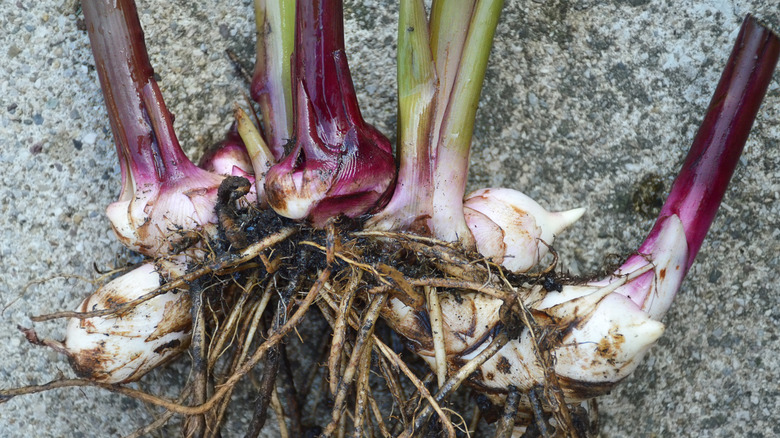You Don't Need Seeds To Start A Beautiful Flower Garden
Thinking of starting a stunning flower garden? If you are like most people, the first thought that might have crossed your mind might be picking up a packet of your favorite flower seeds. But did you know that is just one way to do it? There are plenty of other ways to create a flower garden, too. They are called asexual propagation methods, and they don't need any seeds. And the best part? The plants you grow using these methods will be exactly the same as the original plant.
All you have to do is take a fragment of a favorite plant and then use it to produce a new plant. Common asexual propagation methods for plants include dividing existing ones, taking stem cuttings, layering, or using bulbs and rhizomes. Also, these methods are quicker than using seeds, you can usually grow a bigger plant in much less time.
Plus, the new plants tend to flower sooner than the ones started from seed. Furthermore, asexual or vegetative propagation methods also save you the trouble of finding the right seeds, which is not an easy job. And even if you somehow manage to find them, seed viability and low germination rates can still mess up all your hard work.
Starting a flower garden with divisions and cuttings
Most gardeners have faced this problem: Their flowering plants grow so much over time that their own shoots begin to compete with each other for resources. Also, these crowded, clumped plants with their restricted air flow can harbor diseases and pests. That is where dividing comes in. Dividing your flowering perennials lets you revitalize older plants as well as get new ones for free. To divide your flowers, take up a sharp spade (a garden fork works too). Slice through the clump but be careful to keep some of the root sections together. Take your division and plant it where you want it to thrive. After that, all you have to do is keep the soil moist for a few weeks, and your new plants will soon settle in.
Even if the plant looks fine — it is not clumpy and not dying — and you still want to get new plants out of it, cuttings may be the way to do it. There are a number of common flowers that you can propagate from cuttings, and it is easy. Just cut off a bit of a stem, take off the lower leaves, and stick it into a high-quality planting medium.
Most of the time it will grow, take roots, and grow shoots just fine. However, if you want to increase your chances of success, you should take off the flowers, including new buds, from the cutting. That way, all their stored energy goes into growing roots and new shoots instead of trying to make fruit or seeds.
Growing beautiful flowers with layering and rhizomes
Layering is another method of propagating your flowers. With layering, you can propagate plants while they're still attached to a parent plant. Done right, it can let you grow a full hydrangea hedge from just one plant. And the best part? Since the newly developing plants remain attached to the parent, that parent plant continues to support them. They don't have to struggle to survive all alone like stem cuttings do. To propagate your flowers through layering, pick a long, flexible stem. Bend it to the ground and cover a part of it with soil, leaving 6 to 12 inches of the stem's tip above the ground. To encourage root growth, create a small wound on the bottom of the buried portion of the stem. Once the roots form, cut the young plant from the parent plant, and place it where you want it to grow.
Rhizomes are specialized underground stems that store nutrients and can produce new shoots and roots. When you're propagating from rhizomes, you'll need to dig up the whole thing. Then, slice it into sections with a sharp, clean blade, and make sure that each piece has at least a few buds or eyes where new roots and shoots can sprout from.
In the end, the right method for vegetative propagation depends on the type of flowering plant you're working with. Similarly, finding the ideal timing depends on the flower you want to replicate, and the type of propagation method used. Just do your research before you actually do it. And if you need extra help, just reach out to your local extension service.


